I’ve recently made a cross country move which as you may know was quite the undertaking. We packed everything we owned into a trailer and headed off on the open highway, hoping that all the maintenance I had recently done on our vehicles would pay off. It turns out preventative maintenance did indeed prevent us from breaking down along the way. Most of the preventative maintenance we did included rotating tires and getting fluids changed, but it also included adding BlueDevil products to a few of our fluids to help stop a few leaks on our older vehicles. After arriving safely, I’m happy to report, BlueDevil lived up to its “#1 in the Country” reputation and has sealed the leaks!
The one thing we didn’t plan on was having some different motor vehicle laws to deal with while registering our cars to our new address. We moved from an area where emissions testing was not required to a more metropolitan area where smog was an issue and yearly emissions inspections are required on all vehicles made after 1975. Our vehicles are old, but unfortunately not old enough to exempt us from the emissions test, so I started looking into what it would take to pass the test.
What controls engine emissions?
T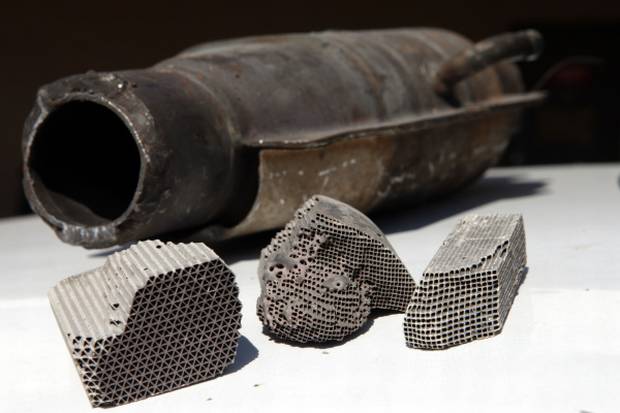 he main component on your vehicle responsible for controlling engine emissions is the catalytic converter, commonly called the “cat.” Introduced after cars were required to run unleaded fuel, catalytic converters became standard equipment in the 70s and are now illegal to remove from your vehicle. Catalytic converters are named for the rare metals inside them that the exhaust gas flows through. These rare metals are a catalyst to convert certain pollutants in the exhaust gas like carbon monoxide and nitrogen dioxide into less harmful gases. This catalyst in the catalytic converter can get used up over time increasing your vehicle emissions and causing you to fail the emissions test.
he main component on your vehicle responsible for controlling engine emissions is the catalytic converter, commonly called the “cat.” Introduced after cars were required to run unleaded fuel, catalytic converters became standard equipment in the 70s and are now illegal to remove from your vehicle. Catalytic converters are named for the rare metals inside them that the exhaust gas flows through. These rare metals are a catalyst to convert certain pollutants in the exhaust gas like carbon monoxide and nitrogen dioxide into less harmful gases. This catalyst in the catalytic converter can get used up over time increasing your vehicle emissions and causing you to fail the emissions test.
Emissions Components:
- Catalytic Converter
- EVAP system: captures gasoline vapors from your fuel tank
- Oxygen (O2) or Air/Fuel Ratio Sensors: measure combustion and emission gas levels
- EGR (Exhaust Gas Recirculation) System: recirculates exhaust gases back to the intake manifold to reduce emissions while the engine is warming up
What is an engine emissions test?
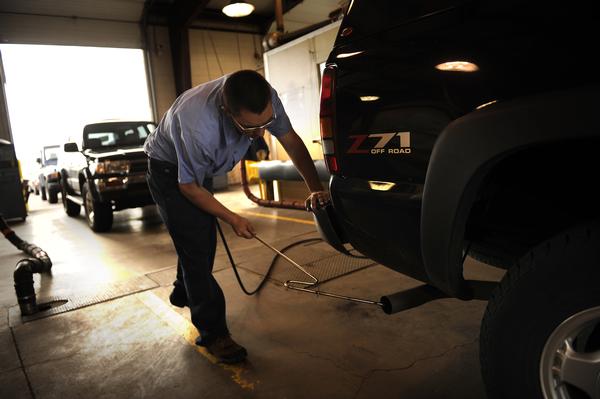 Most vehicle emissions tests requires a visual inspection of these components to ensure they are still installed and functioning properly, or a computer test to ensure the sensors are functioning properly. Many states also still require a sample of your vehicles emissions to be collected and analyzed, sometimes called a “sniffer” test.
Most vehicle emissions tests requires a visual inspection of these components to ensure they are still installed and functioning properly, or a computer test to ensure the sensors are functioning properly. Many states also still require a sample of your vehicles emissions to be collected and analyzed, sometimes called a “sniffer” test.
The test procedure can be expensive and time consuming, so you want to make sure your vehicle will pass the test before you head into a testing station. Our vehicle had 250,000 miles on the original catalytic converter and had gone without a test for almost 7 years so we were nervous it may be in need of replacement. We found one of the best ways to ensure your vehicle will pass is to add BlueDevil Fuel MD to your gas before you head to the testing station. BlueDevil FuelMD is a special blend of additives designed increase your engine’s efficiency and reduce emissions. One bottle treats up to 15 gallons of gas, is safe for all of your engine components and sensors, and is guaranteed to get your vehicle to pass your emissions test.
Don’t waste your time and money failing emissions tests, or replacing a catalytic converter that still has some life left in it. BlueDevil FuelMD is the best and easiest way to ensure your vehicle will pass its next emissions test. FuelMD also has lots of other benefits for your engine.
BlueDevil Products can be found on Amazon.com or at AutoZone, Advance Auto Parts, O’Reilly Auto Parts, NAPA, and other major auto parts retailers.
59 responses to "How Can I Pass the Emissions Test?"
59 Comments
Leave a Reply
Related Articles
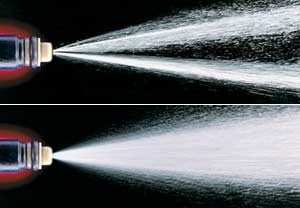
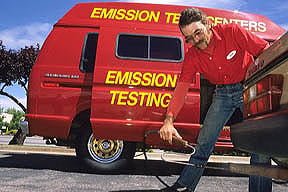
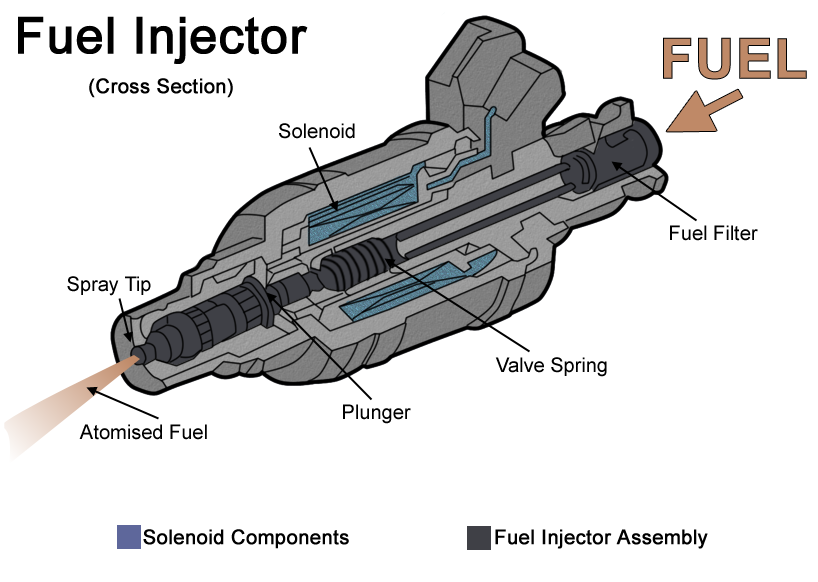

Dear Sirs,
I have Toyota Camry 2006 LE (2.4 L 4-cylinder engine) and the check engine is ON. When I took it to the local auto service station, they have diagnosed and mentioned that the “cat” (catalytic converter) needs to be replaced. I received the quote of $850 to replace “cat” (including labor charges). Honestly I do not have this amount to spend at this moment. Moreover, my car tags are getting expired and I need to renew them. When spoke to the emission testing service center, they have asked to get the check engine issue fixed as the emission testing will certainly fail with the light is ON. But I do not have $850 to repair “cat” at this moment. So I was googleing for options or help or suggestions on how to pass the emission test with bat “cat” and found your article. After reading your article, I started to get some relief. I have a question in this regard. Do you mean, adding BlueDevil FuelMD to my car will resolve the issue and get the emission testing passed? If so, is this BlueDevil FuelMD be added to gas (tank) or to the engine? If I add BlueDevil FuelMD to the car, will the check engine light be gone (OFF)? Kindly consider my questions and let me know the details. Also, please provide the steps as how to add BlueDevil FuelMD to my car (Toyota Camry 2006 LE) and get the emission testing passed? Thank you in advance.
Naga,
Thanks for your question about your Camry. BlueDevil Fuel MD is designed to restore efficiency to your engine by removing harmful engine deposits and cleaning your fuel system. A more efficient engine will reduce your engine’s emissions and increase your fuel mileage so depending how old your catalytic converter is it may help. We recommend using Fuel MD every 3000 miles to keep your car running properly so if you haven’t used Fuel MD since your last oil change it is a good idea. Simply pour 1 bottle of Fuel MD into your fuel tank when it is half full and drive your vehicle until the tank is almost empty. The best time to get your emissions tested is right before you refuel after using Fuel MD.
Unfortunately, catalytic converters only last a certain number of miles before they need to be replaced so if yours is worn out, replacing it is your only option. Toyota’s vehicles are known for having unnecessarily tight settings on their emissions monitors so it is possible your car will still pass the emissions test even if your check engine light says it is time for a new catalytic converter, especially if the light just came on.
Your mistress has to be at half a tank or more to pass so that can’t be done so you have to refuel to do that right
Denise-
We are unclear as to what specifically you are asking in regards to passing emissions. Please contact us at 888-863-0426 and we would be happy to assist you.
Thank you!
-BDP
A cat will last forever and not wear out on a properly running engine. They go bad by engines running too rich and then they melt inside.
I just got the muffler on today when can I take it to do the emission test
Sharifa-
Please contact our technical support line at 888-863-0426 so that we can get a better understanding of the vehicle’s condition and be able to make any appropriate recommendations.
Thank you!
-BDP
Need bluedevil fuel MD. Auto Zone & O’Reily did not have it. May I purchase it from you?
Eddie-
Yes, the BlueDevil Fuel MD is available for purchase on our website, found here: http://store.gobdp.com/fuel-system-cleaner-00202/ .
Thank you!
-BDP
I have a 2000 Buick LeSabre custom and I’ve had every sensor changed but it still says evap emission control system. My engine light is on. Can I use it if it said cat on test
Shaneda-
Thank you for asking about your Buick LeSabre. Based on your description, we do recommend using the BlueDevil Fuel System Cleaner http://store.gobdp.com/fuel-system-cleaner-00202/. Feel free to contact our technical support line at 888-863-0426 with any other questions.
Thank you!
-BDP
Hi,
I have a 1995 Isuzu v6 3.2 liter engine that failed emissions possibly because of a bad erg vale. Would your product possibly help it pass? Which product do you suggest I use?
Jennifer-
If the valve is bad due to it being dirty then yes the BlueDevil Fuel MD Fuel System Cleaner would help clean the valve and get it working properly. If it has failed for some other reason then the only solution may be to replace it.
Thank you!
-BDP
is this for any car, I drive a Mercedes 190-e 1993
Dolores-
Yes, the BlueDevil Fuel MD can be used in any make or model vehicle.
Thank you!
-BDP
i have a 2001 buick lasabre and the “cat” is the reason why its not passing emission. I have tried 2 different products and they have yet to helpass emission Are you sure that this product will do the job?
Taquia-
We have had very good success with BlueDevil Fuel MD (http://store.gobdp.com/fuel-system-cleaner-00202/). It has helped many vehicles pass emissions tests in the past.
Thank you!
-BDP
Ware can i find it at
The product may be purchased through our website here: http://store.gobdp.com/fuel-system-cleaner-00202/. You may also order it through O’Reilly Auto Parts or Advance Auto Parts using the part number (Part # 00202).
Thank you!
-BDP
I have a 2011 Nissan sentra with 77000 miles it was messing up & I called extended warranty they had me send my car to pep boys….long story short they denied my case bcuz pep boys told them my motor was blown….I begged the side with them…..my check engine light was never on…..remind you this was when my car was @ 76000 I’ve gotten a tune up then ran it the emission & failed due to drive cycle…..I decided to take the battery cables off then do drive cycle…..now my check engine light is on…???…I’m confused. But above all that will blue devil help me????
Pennie-
Thank you for asking about your Nissan Sentra. Based on your description, it is hard to determine the symptoms the vehicle is having. Please contact our technical support line at 888-863-0426 so that we can get a better idea of the situation and be able to make any appropriate recommendations.
Thank you!
-BDP
Hi there, i have a 1993 jeep grand cherokee with a straight pipe system (no cat, muffler, or tail pipe) and im trying to get it registered, what should i do in the case of having it get registered, and will using this product help me pass smog?
The engine has now 346,xxx miles on it, but had 344,xxx miles when i started driving it hard and long on offroad settings through baja california.
It has not produced any visual smoke and im trying my best not to spend upwards of $1000 to have new exhaust welded on.
Daniel,
Thanks for your question about your Jeep. The first thing to do would be to call the emissions control agency in the county you are trying to register your Jeep in and ask them what components they require your vehicle to have and what tests they perform. This will help you know what components you need to replace or add to your vehicle. You will most likely need an operational EGR system, EVAP system, PVC system and catalytic converter. Many aftermarket companies offer high flow catalytic converters that are certified by the EPA and can be easily welded into your current exhaust system for a fraction of the price of an OEM converter, they just don’t last as long, so you may consider that as an option as well.
Thanks again for your question!
-BD Auto Pro
Will my engine light still come on once i clear the code and run the drive cycle once I use this product?
Lisa-
It really depends the cause of the engine code you are seeing. If the code you are experiencing is due to dirty fuel injectors or something else within the fuel system then it is likely that BlueDevil Fuel MD Fuel System Cleaner will clear the code.
Thank you!
-BDP
If I was to straight pipe my 98 jeep Cherokee classic would it still pass emissions? Its completely stock and if not do you have any hints to help me increase my chances of passing? Every thing works fine on the car. Just curious?
Layne,
Thanks for your question about your Jeep Cherokee. The answer depends a lot on where you live and what they check for during an emissions test. Our recommendation would be to call your local emissions office and ask what your vehicle needs to have installed and functioning to pass the emissions test. Most likely your vehicle will need a functioning evap system, EGR valve, and at least 1 catalytic converter. In most cases what you do after the catalytic converter (like take out the muffler) won’t affect your vehicle’s ability to pass emissions.
Thanks again for your question!
-BD Auto Pro
2007 jeep patriot
Intank manifold stuck open…will it clean it
B-
Thank you for asking about your Jeep Patriot. The BlueDevil Fuel System Cleaner will remove fuel deposits and increase engine performance. It improves fuel mileage and efficiency. The product will also help reduce emissions. Feel free to contact our technical support line at 888-863-0426 with any other questions.
Thank you!
-BDP
Hello i have a 2004 cadillac cts 3.6 and its failing emission test due to cat converts both sides low threahold will this product help pass emission test
Jessica-
Thank you for asking about your Cadillac CTS. Based on your description, we would recommend using the BlueDevil Complete Fuel System Cleaner. BlueDevil will clean fuel injectors, remove deposits from intake valves, and reduce emissions which will restore your engine and allow for peak performance.
Thank you!
-BDP
2003 toyota celica. p0420 is the code but no CEL, mechanic said my cat is worn out (250,000 km) but i dont have money to replace the cat. Im due for e-test. so i put a spacer on the downstream o2 sensor to “reduce” emissions. Will this help? And should i also use bluedevil to increase my chances of passing?
Tom-
Thank you for asking about your Toyota Celica. Based on your description, we would recommend using the BlueDevil Fuel System Cleaner http://store.gobdp.com/fuel-system-cleaner-00202/, in addition to what you have already done to your 02 sensor. The BlueDevil Fuel System Cleaner will improves gas mileage, fuel efficiency, vehicle start up, & will restore a consistent engine idle while lowering fuel octane requirements.
Thank you!
-BDP
I have a 2004 Mazda6 with 161k miles on it. The engine light is not on but I can’t pass emissions, the dealer indicated that the cat was bad and would need to be replaced. Would this product help? Is it unusual to fail emissions due to a bad cat but not have the engine light on?
Paul-
Thank you for asking about your Mazda 6. Typically, a bad cat would throw a code or check engine light on your dash. A bad cat sensor could be why this is not indicating on the dash. Based on your description, we recommend using the BlueDevil Fuel System Cleaner (http://store.gobdp.com/fuel-system-cleaner-00202/). Feel free to contact our technical support line at 888-863-0426 with any other questions.
Thank you!
-BDP
I have a dodge grand caravan sxt 3.8 L. Here is what comes in ILLINOIS vehicle inspection report:
Overall result: REJECT
System monitors:
Engine misfire ready
Fuel system ready
Comprehensive comp ready
Catalytic converter not ready
Evaporative system ready
Heated 02 sensor ready
Oxygen sensor not ready
Secondary air system not supported
A/C refrigerant not supported
EGR flow ready
Heated catalyst not supported
Dignostic trouble codes (DTC)
DTCs 0
Mil command status: OFF
When I did find a computer code saying PO 420 but didn’t check for the other code in the “not ready” system monitors.
Would you please tell me what best option to do in order to go back and pass the emission test and if the BLUE DEVIL would work for my car.
Thank you so much,
Kass
El houssine-
Thank you for asking about your Dodge Grand Caravan. Based on your description and vehicle inspection report, we recommend using the BlueDevil Fuel System Cleaner (http://store.gobdp.com/fuel-system-cleaner-00202/). The product will protect fuel sensors and dissolve fuel system deposits, which should get the vehicle to pass emissions.
Thank you!
-BDP
I totally agree with you in that it is a great idea to make sure you will pass your emissions tests before taking your car in. It makes sense that doing this can save you a ton of time since these tests can take a while. We just moved to a new town and want to find a car shop that can inspect our cars, so I’ll keep your tips in mind to make sure we pass the first time when we need to take our vehicles in.
I drive a 2003 Volkswagen Jetta & I failed the inspection test due to the following codes:
P0420
P0411
P0351
P2177
P0300
P0301
P0302
& the repair shop said the fault maybe on the catalytic converter. Please reply back as soon as possible. Thanks a bunch for your attention.
Daniel,
Thanks for your question about your 2003 Jetta. Rather than run through all the codes, we’ll break them down into two categories. First, code P0420 and P0411 are emissions codes. P0420 indicates low catalyst efficiency and P0411 indicates a problem with your air injection system. We wouldn’t recommend worrying about those until you get the rest of the problems correct sine they other problems may be causing false readings and those codes to pop up. The rest of the codes indicate misfires and problems with either your fuel or ignition system. Our recommendation would be to start by changing your spark plugs and seeing which codes are still there. If you still have misfire or ignition errors after that, try checking your ignition coils. Once you get that worked out, try resetting the codes and our guess would be that P0420 won’t come back. If P0411 comes back, look for leaks or broken hoses in your air injection system.
Thanks again for your question!
-BD Auto Pro
My e-check keeps failing they are doing tailpipe test no light’s on dash it’s a neon saying Nitro oxygen is high will this product help me to pass
Nika-
Based on your description, we recommend using the BlueDevil Fuel System Cleaner (https://store.gobdp.com/fuel-system-cleaner-00202/). The Fuel System Cleaner will help remove fuel deposits and reduce emissions, helping you to pass your emissions test.
Thank you!
-BDP
Hi my engine light just came on and I took it to Advanced they ran the code and the guy said it was my Catalyst Convertor . Can I use the blue devil fuel for it to pass the emissions test? The engine light is now off.
Thanks Shan
Shanto-
Yes, the BlueDevil Fuel System Cleaner (https://store.gobdp.com/fuel-system-cleaner-00202/) dissolves fuel system deposits, increasing vehicle performance. Using the Fuel System Cleaner will lower fuel octane requirements and help you pass your emissions test.
Thank you!
-BDP
if i drive a lexus ls 400 and it has a 4 liter v8 and i take off the mufflers but leave all 3 cats on will i pass emissions?
Tuck,
Thanks for your question about your Lexus LS400. Mufflers do not change the chemical content of your exhaust gas, just the volume and tone of the exhaust. If you leave the catalytic converters installed the chemical content of your exhaust (NOX, CO, CO2, hydrocarbons) will remain nearly the same. With that said you should also check your local laws on the requirements of mufflers as well as the requirement of exhaust systems exiting outside the passenger compartment of your vehicle to make sure you aren’t driving illegally for those reasons.
Thanks again for your question!
-BD Auto Pro
thanks that makes me feel better. i have emission test in a few days cause i haven’t done it in a good while and i took the muffler off.
I have a 1996 Buick Century that leaks water sometimes. I have had to put water in it daily for awhile and then I don’t need to for awhile. It has never overheated and the radiator cap is never too hot to remove after driving. Will this cause a failed emissions? I have to transfer my vehicle from WA state to CA so I want to be prepared.
Shauna-
Thank you for asking about your Buick Century. Have you noticed any water leaks? Have any warning light indicators or engine lights come on the dash? Please contact our technical support line at 888-863-0426 so we can get a little better understanding of the vehicle’s condition and be able to make any appropriate recommendations.
Thank you!
-BDP
So I have a friend who drives a 2002 Trail Blazer and it’s says that the O2 system is incomplete and I’m hoping to figure out if there is anything he can do to fix it, he also had it before where it was saying it was the “cat” and the check engine light was on and saying he had 3 incomplete, yesterday all but the O2 system changed to complete and the check engine light turned off and so I’m trying to figure out if there is anything he can do to fix that because he has to get the emmisions test done in the next week and I’m trying to see if there’s something he can use or do to fix that so he can pass his emmisions test
Emi-
Thank you for asking about your friend’s Chevy Trailblazer. Based on your description, we would recommend using the BlueDevil Complete Fuel System Cleaner (https://gobdp.com/product/fuel-system-cleaner-00202/). The product will dissolve fuel system deposits and reduce emissions, helping him pass his emissions test.
Thank you!
-BDP
Hi I have a 92 Buick century 6 cylinder if I buy that stuff to pass my smog will it work
Elizabeth-
Thank you for asking about your Buick Century. Yes, the BlueDevil Complete Fuel System Cleaner is guaranteed to help you pass your emissions test. Feel free to contact our technical support line at 888-863-0426 with any other questions.
Thank you!
-BDP
I have a 2003 Jeep Liberty and my engine light JUST came on. Got the code for catalytic converter. But my mechanic turned the engine light off and said I still have plenty of time before it’s a problem. Do you think it’ll pass smog? Will this blue devil stuff help???
Jane-
Thank you for asking about your Jeep Liberty. Just because the mechanic cleared the code, it doesn’t mean it would not come back. Based on your description, we would recommend using the BlueDevil Complete Fuel System Cleaner. BlueDevil will clean fuel injectors, remove deposits from intake valves, and reduce emissions which will restore your engine and allow for peak performance.
Thank you!
-BDP
Hi I have a 2016 Nissan Altima with a Cracked Catalytic Convertor, will this help me pass Emissions?
Mike-
Thank you for asking about your Nissan Altima. Unfortunately, we do not manufacture a product that will help fix a cracked catalytic converter. A hard part repair may be your best option.
Thank you!
-BDP
I have a 09′ nissan maxima – check engine light came on.. i got the error code about the gas cap or potential leak .. i was going to turn the light off.. do you have suggestions or advice? a product i can use.. any information is greatly appreciated
Brian-
Thank you for asking about your Nissan Maxima. Based on your description, we’d first recommend having the gas cap replaced. It would be difficult to diagnose the exact cause of the leak, however, a faulty gas cap would definitely be a reasonable explanation. If the problem persists after replacing the cap, it may be wise to try the BlueDevil Fuel System Cleaner. This product is guaranteed to help you pass emissions. Feel free to contact our technical support line at 888-863-0426 with any other questions.
Thank you!
-BDP